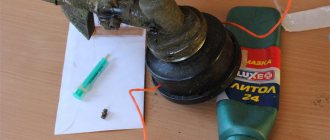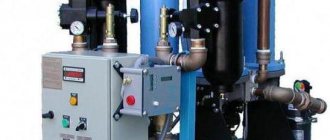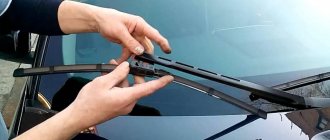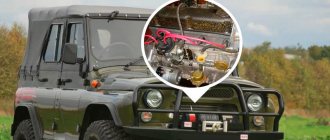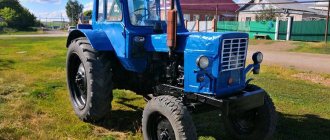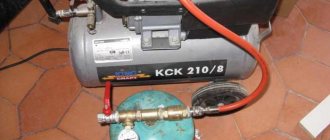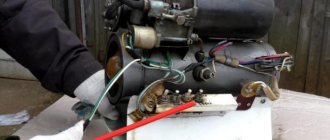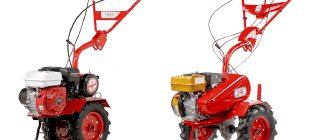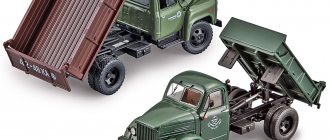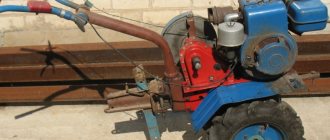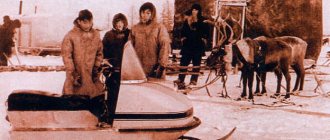| Place | Name | Characteristics in the rating |
| TOP 5 best dump trucks |
| 1 | Scania G440 | Modern universal dump truck |
| 2 | KAMAZ 65115 | Reliability and unpretentiousness |
| 3 | HOWO 6x6 | Favorable combination of price and quality |
| 4 | MAZ 5550 | Best price |
| 5 | Volvo FMX | Comfort and convenience |
Trucks play a huge role in the work life of society. In a number of industries, self-unloading machines are a priority. They become indispensable assistants in construction, agriculture, mining, etc. In each case, enterprise managers select dump trucks with a set of certain properties. Some require maximum carrying capacity, others value mobility in trucks, and others focus only on their financial capabilities. Today, the Russian market presents equipment from all over the world. The consumer is offered road vehicles, mining (off-road) dump trucks, and equipment for underground work. Most often, attention is drawn to universal models that are capable of transporting various loads, both on asphalt roads and off-road. To choose the right car, experts recommend taking into account several factors.
- Thrifty owners always want to get good equipment for a minimum amount of money. Today, along with popular Russian and Belarusian dump trucks, machines from the Middle Kingdom are successfully operating. According to some indicators, Chinese trucks already look preferable to our equipment.
- But it’s not only important to buy a truck cheaply, you also have to maintain it. Availability of spare parts, engine efficiency, unpretentiousness to Russian conditions, maintainability - these are the points that can have a decisive influence on the purchase.
- Modern managers do not forget about the convenience of the driver. To withstand a full shift on a dump truck, an optimal microclimate must be created in the cabin. Only in this case will there be a minimum number of sick leaves.
Our review included the best dump trucks that confidently drive along the roads of Russia. When selecting applicants, the following criteria were taken into account:
- reliability and unpretentiousness;
- versatility;
- price;
- expert opinion;
- consumer reviews.
Hitachi EH50000AC-3
The EH5000AC-3 is Hitachi's largest RDT, with a rated lift capacity of over 296 tonnes and a reputation for excellence in the surface mining industry.
The EH5000AC-3 has proven to be an extremely powerful and reliable solution for mines around the world, with advanced drive control systems, cost advantages, a powerful engine and a robust body structure. The total weight of the dump truck is 500 tons.
How to choose a dump truck
The most important characteristic by which a dump truck is selected is load capacity. It is economically feasible to use heavy-duty machines to perform significant volumes of work.
Loading and unloading conditions significantly influence the choice of dump truck: if access is difficult, you need a maneuverable vehicle capable of unloading material in the right direction.
It is necessary to take into account the routes of the dump truck, choosing one that has characteristics acceptable on these roads and permits, if necessary. Taking these conditions into account, the appropriate dump truck is selected based on its technical characteristics.
Komatsu 960E
Komatsu America Corp. in 2007 announced the release of the 960E-1 (960E) . The largest of Komatsu's range of mining trucks, the new model has a payload of 360 tonnes and weighs 576 tonnes when fully loaded.
The 960E balances payload, performance and power, and is designed to meet today's industry needs.
Standing nearly 11 meters tall, the 960E uses a modern frame design and advanced technology. With over 3 years of experience (from coalfields to deep copper mining), Komatsu has tested and proven the truck is ready for today's industry needs.
Komatsu, by the way, is the world leader in the field of electric mining trucks and was the first to introduce AC systems for high-end mining trucks with the serial production of the 930E in 1996.
Today, the 930E is the best-selling "ultra" truck with more than 650 vehicles in the field. The 960E builds on this success and offers customers the right match in production capacity, speed and operating costs. From the rugged body to the standard 56/80R63 tires, the 960E is designed to be a low-cost leader.
The 960E is powered by the Komatsu SSDA18V170 engine, which uses a unique two-stage turbocharged air handling system to deliver 3,500 horsepower at the lowest specific fuel consumption (BSFC) rating for this truck class.
"Russians" versus "foreigners"
Based on many years of experience in communicating with carriers from different regions of Russia, I can say with confidence that ideal technology does not exist. Both cheap domestic cars and expensive foreign cars break down. Therefore, the postulate about the absolute superiority of imported dump trucks is nothing more than a myth or a common misconception.
Yes, there are more problems with domestic technology, and in some cases its use is not as effective as more advanced foreign analogues. Yes, the specific power of European cars is often higher than that of Russian, Belarusian or Ukrainian cars. But the chances of the equipment are equalized due to the fact that there are still more service points for servicing KamAZ, MAZ, KrAZ vehicles than branded service stations MAN, DAF, Volvo, Renault and other foreign brands. Spare parts for domestic equipment are cheaper, and if necessary, simple repairs can be performed on your own, without visiting a company service center. With foreign cars the situation is different: original spare parts are by no means cheap and are not always available at the regional warehouse, and replacing a failed unit usually requires the intervention of a qualified specialist.
It would seem that this should put domestic dump trucks in a privileged position. But what’s surprising is that Russian road carriers do not strive to “take advantage of numbers” as before, and are increasingly turning their attention to foreign trucks. This is explained by simple arithmetic calculations. Firstly, the payload capacity of foreign dump trucks is in most cases higher than domestic ones, and with comparable fuel consumption, the “foreigner” carries more cargo, which entails real economic benefits. The bodies of foreign cars are more spacious and are almost always equipped with heating, which eliminates some of the problems with cargo safety.
Secondly, cars from Western manufacturers are preferable due to a wide range of additional equipment. You can create the most comfortable conditions for the driver, and make the dump truck optimal from the point of view of the transport tasks being solved. Heated fuel tank, heated battery box, reinforced suspension and other options make the equipment suitable for the most severe operating conditions.
But with poor pre-sale preparation or insufficient supply, European cars are very vulnerable in the first months of operation. There are cases when, due to the inattention of the technical staff of a trading organization, the buyer had to remove new cars from the route due to trivial breakdowns.
Terex Titan 33-19
Terex Titan 33-19 dump truck , which weighs 260 tons when empty, was released back in 1973. It has since been eclipsed in terms of power, but in terms of size, it is still capable of competing with the new products. Together with cargo, it weighs 317,520 kg.
The Titan 33-19 was assembled in London and Ontario by Terex, which was a subsidiary of General Motors at the time. The dump truck held the record for largest from 1973 to 1988.
Manufacturer
Not only the appearance of the car, but also its reliability and performance depend on this factor. Our company produces exclusively high-quality equipment, which can be assembled taking into account the individual wishes of the customer. It is characterized by durability, since only time-tested components and equipment are used in the work. Therefore, we are ready to provide a quality guarantee for our products.
The dump trucks use mechanisms only from European manufacturers and have a reliable design. An individual approach is developed for each client. If necessary, it is possible to organize delivery to the regions or manufacture equipment to order.
XCMG DE400
The XCMG DE400 is a mining dump truck with a payload capacity of 363 tons. Measuring 16m long and 7.6m high, the DE400 can transport a variety of materials from soil and coal to rock.
At maximum lifting load, it takes just 24 seconds to reach the maximum limit. This dump truck has a maximum speed of 50 km per hour when fully loaded.
It uses two 20-cylinder Tier-2 MTU 4000 Series diesel engines with a total output of 3,650 hp. The latest version of China's largest dump truck already uses an electric drive developed by XCMG itself, making it the world's largest dump truck to use an electric drive instead of a conventional mechanical drive.
Endless world of dump trucks
The world of dump trucks is inexhaustible, like an atom, in it you can find a solution for every taste and color. There are domestic, Chinese and European dump trucks to choose from, the latter being European, Russian, and now Chinese-assembled. The list of body and chassis variations can be continued indefinitely, without forgetting about such a segment as tipper semi-trailers.
Volvo Trucks' extensive offer, the most interesting is the range of FMX dump trucks for the construction and mining industries on 2, 3, 4 and 5 axle chassis and 2, 3 and 4 axle tractor units. At the moment, the assembly production of Volvo Trucks in Kaluga is temporarily suspended, and equipment is supplied from Sweden and Belgium.
Dump trucks are offered with wheel arrangements of 4x2, 4x4, 6x2, 6x4, 6x6, 8x2, 8x4, 8x6 and 10x4. Truck tractors are offered with wheel arrangements of 4x2, 4x4, 6x4, 6x6 and even 8x4. Volvo FMX is equipped with a restyled short and low day cab, a low cab with a sleeper and a high Globetrotter cab with a “sleeper”. A significant change to the bumper design that Volvo is highlighting is the towing device, which consists of a high-strength cross member and pin and can withstand a load of 32 tonnes.
The new 8x4 dump truck differs from the standard version. It has a conventional steered front axle, a double-axle rear bogie and a fourth lifting steering axle with positive steering. The turning radius of this configuration is 5 m less than that of a dump truck with a conventional 8x4 wheel arrangement with two front steered axles. In response to the advance from the East, Volvo Trucks introduced the FMX 10x4. Driven 3rd and 4th axles, steered 1st and 2nd axles with steering 5th. The control has its own characteristics, which consist not only in choosing the turning radius, but also in switching from automatic to manual mode of the I-Shift box before each climb and back after the climb. Truck tractors diversify the line and will appeal to carriers working with tipper semi-trailers, especially since the line includes a 4x4 all-wheel drive model that is passable and maneuverable.
In June 2014, a new product from Kässbohrer appeared in Russia - the K.SKS.B tipper semi-trailer (32 m3), designed specifically for the needs and strict regulations of the Russian construction industry. Kässbohrer engineers, with traditional German foresight, took into account the climatic conditions of Russia, the condition of our roads, and our special operating conditions when creating it. Therefore, K.SKS.B, made of Hardox and Domex steel with anti-corrosion protection, turned out to be very durable, designed to withstand high overloads. And it can operate at temperatures down to –40°C.
K.SKS.B is interesting because it includes a whole palette of the latest technologies that increase transportation safety. The dynamic stabilization system has a magnetic sensor that automatically reads the roll angle when taking difficult turns. Electronics informs the driver about road irregularities. The Wabco EBS 2S/2M dual-circuit electro-pneumatic braking system with automatic brake force adjustment (European standard 71/320/EEC) is equipped with the RSS (Roll Stability Support) function, which holds the semi-trailer when cornering, preventing it from skidding and overturning. Combined with a low center of gravity (2250 mm), all these technologies make the K.SKS.B agile and stable on the track. The rear underride guard is equipped with the RUPD-AB shock-absorbing system, which absorbs impact in the event of a collision. The axle unit with SAF Custom Design suspension, developed specifically for dump trucks, has a high level of protection for the brake chambers from damage.
The hydraulic tilt drive is equipped with a 5-speed Hyva cylinder. All K.SKS.B hydraulics are protected from overload: the pressure in the system never exceeds the permissible limit (176 bar). Thanks to the combined efforts of Kässbohrer and Hyva, complete unloading is achieved even before the maximum body tilt angle (45°) is reached. This reserve gives the carrier confidence in quickly unloading the K.SKS.B even in difficult conditions, for example when material sticks together in the body due to high humidity.
The Chinese auto industry is represented by several major brands, including FAW , the state-owned China First Automotive Group Corporation. FAW was one of the first Chinese car factories to enter the Russian market in 2007 and was the first to open an official representative office here. The new generation of FAW J6 Euro 4 vehicles, introduced in June 2013, is not one, but two steps in the evolution of FAW. First of all, FAW dump trucks are presented in two models: CA 3250 6x4 and CA 3310 8x4. The design as a whole, the cabin, and the component base have been radically redesigned in order to significantly improve the technical, operational and consumer qualities of the car. The range of engines was developed by the engineering company AVL LIST GMBH (Graz, Austria). The frame is strengthened both by thick-walled side members and cross members, and by criss-cross bracing over the rear bogie. The dump trucks received turbocharged 6-cylinder in-line engines: three-axle with a volume of 8.6 liters and a power of 370 hp, a four-axle with a volume of 11 liters and a power of 390 hp. Torque is transmitted through a single-plate clutch to an unsynchronized gearbox with a divider: 10- or 12-speed. A 12-speed synchronized Fast Gear Fuller 12JSD160T gearbox is available upon request.
Spring suspension on all axles with drum brakes.
The braking system is built on Wabco components with ABS and a water separator. The auxiliary braking system is an engine retarder.
Designers and constructors have turned the new J6 cabin into a compact apartment. It is spacious, comfortable and even cozy, but the driver will especially enjoy the sleeping place.
Dumping platforms with a capacity of 19 and 23 m3 of rectangular cross-section with hollow stiffeners through which exhaust gases are passed, heating the cargo. The platforms are welded from durable steel with a thickness of 8 mm on the bottom and 6 mm on the walls. The platform is raised by a Hyva hydraulic cylinder by 52°.
In 2010, new models of dump trucks produced by the Chelyabinsk Machine-Building Plant of Automotive Trailers (JSC Uralavtotripsep) , which received the personal name “Rhinoceros”.
The ChMZAP 9520-020 tipper semi-trailer and its modifications allow transporting up to 30 tons of cargo, while the weight of the equipped semi-trailer is 8.7 tons, the load on the tractor control system is 12.7 tons. The semi-trailer is equipped with an air suspension with one lifting axle and a dual-circuit pneumatic braking system Wabco with electronic control.
Unlike the previous model, the ChMZAP 9520-030 series of semi-trailers is adapted to Russian off-road conditions and is designed for more severe operating conditions. The load capacity of these models has been increased to 41 tons; for endurance and better maneuverability, spring-balance suspension and gable tires are used. Plus, they have retractable mechanical outriggers, which help maintain the stability of the semi-trailer when unloading.
“Rhinoceros” ChMZAP 9520-022, also on a spring-balancer suspension, but with a single-pitch tire, is aimed at consumers who need a “lightweight” version with a capacity of 31 tons. Retractable outriggers are also used here. Developed specification 9520-022PS for air suspension.
A little later, the Rhinoceros ChMZAP 9520-030B was released with an increased cubic capacity - 40 m3, lifting capacity 42 tons. The capacity was increased due to the extension sides.
The maximum body elevation angle on all Rhino models is 52°, which ensures quick removal of the load. The body tipping mechanism is equipped with a telescopic 5-link hydraulic cylinder from Hyva or Penta with a safety valve. The thickness of the bottom varies from 6 to 10 mm, the walls - from 5 to 8 mm, depending on the load capacity, that is, more than that of competing offers. The reinforced frame is made of high-strength structural low-alloy hot-rolled steel.
All dump semi-trailers are equipped with a special locking device that secures the body relative to the frame in the transport position. This device allows you to eliminate body rumble when driving with an unloaded semi-trailer.
In 2014, another noteworthy player appeared on the tipper semi-trailer market: it introduced the Tipper series - tipper semi-trailers with a half-pipe steel body with a capacity of 31 and 34 m3. The design of the semi-trailer has European roots, but at the same time fully takes into account the peculiarities of operation in Russia. All elements are reinforced. The body is raised by 45° using a Hyva or Penta hydraulic cylinder. Each semi-trailer is equipped with a landing platform, one spare wheel and a winch for lifting it. A side roll-up awning is installed as standard. A lift-up underride guard at the rear provides added convenience when unloading directly into the paver. It is possible to heat the body with exhaust gases. The chassis features SAF air suspension and axles with heavy-duty Intradrum Custom Design drum brakes, Wabco EBS braking system and 385.65R22.5 tires. Optional equipment includes a lift axle, disc brakes, a suspension and brake information control unit, as well as tires of various types and manufacturers.
Two years ago, at the Comtrans-2013 exhibition, Automechanical Plant presented one of the first dump trucks of its own production. It was a Mitsubishi Fuso with a Unic crane. This time at the STT-2015 exhibition, the plant will show a dump truck on the Hino-300 light-duty chassis with a double-row cab. With a total weight of 7.5 tons, the vehicle is capable of transporting 3250 kg of cargo, as well as a work crew of 7 people. This model of dump truck has a three-way unloading, the tailgate opens both down and up and can be used for transporting not only bulk cargo, but also other materials, light equipment and equipment for a utility crew. The dump truck platform can be mounted on various Russian and foreign-made chassis. It is equipped with Austrian Fuhrmann side profiles with a height of 600 mm and fittings produced by the Italian company Italautocar. Before painting, the platform and subframe are sandblasted and coated with anti-corrosion primer, which increases the resistance of the metal structure to aggressive environments. The hydraulic system is made of high-quality Italian-made components (Di Natale-Bertelli and OMFB). The dump truck will be presented at the Automechanical stand.
Gruzavtomarket LLC , the general distributor of the KROMANN brand, is expanding its presence in the Russian market and debuting in the field of KROMANN Damp dump truck superstructures. This joint project is being implemented at the Kaliningrad Automobile.
The line of tipper superstructures has four basic models. 1W Rear bodies include the classic rectangular Classic body, the reinforced Hard rock body and the oval Half-Pipe body. They complement the line of Tipper bodies with side 2W and three-sided 3W unloading. Assembly kits of superstructures are supplied to the car plant from Poland, which ensures minimal logistics costs. The bodies are specially designed for 6x4 dump truck chassis Daewoo Novus CL5DM assembled in Kaliningrad and Ford Trucks 3536D DC, the start of production of which at AVTOTOR is planned in June 2015.
Construction dump trucks with Classic bodies with rear dumping are designed for work in difficult conditions. The body has an optimal design with inclined side reinforcements to provide additional rigidity. High body stabilization during unloading is achieved thanks to a robust, torsion-resistant box-section subframe with a cross-shaped reinforcement at the rear.
Hard dump trucks with a rectangular rock body are used to transport stone, gravel, crushed stone and construction waste. The back gate is designed to handle rock. The low, 135° opening hydraulic side and offset top hanging panel provide a large opening. The bodies have a long service life, low dead weight and an attractive appearance.
Daewoo Novus CL5DM 6x4 mining dump trucks with a total structural weight of 38 tons with KROMANN bodies with a volume of up to 20 m3 have powerful axles and are capable of transporting up to 24 tons of cargo. Equipped with a 440 hp Cummins ISM engine, a ZF16S2231TO manual transmission and a one and a half sleeper cab, the vehicle reaches speeds of up to 109 km/h, has a minimum turning radius of 9.5 m. It meets extreme operational requirements and is designed to work in the most difficult conditions.
For large construction sites, KROMANN offers dump trucks with a Half-Pipe body for transporting bulk inert materials. Its advantages are its light weight and oval shape, which prevents the transported cargo from getting stuck. Thanks to the floor and side walls made of high-strength, impact- and abrasion-resistant Swedish steel, the body is lightweight and has a large volume. The rear inclined board can be designed with external or internal fit. The inner side allows the transport of viscous materials.
Tipper bodies with rear and side dumping for 3-4 axle chassis are classic bodies with a central location of the lift cylinder under the floor. All sides have a top suspension and open from bottom to top. Using a special spring mechanism, it is possible to open the side down and up. The body can be additionally equipped with a mechanism for hydraulically opening the sides.
Ford Trucks 3536D DC 6x4 dump trucks with KROMANN bodies with a volume of 14–16 m3 and an allowable design weight of 34 tons can transport up to 21 tons of various cargo. Equipped with a “winter package”, they are used for work in quarries, when filling roads, and on construction sites. With an increased ground clearance of 360 mm, a robust 10 mm frame and reinforced multi-leaf springs, they are capable of tough work.
All KROMANN dump bodies have important advantages: a long service life due to the use of durable wear-resistant steel for the floor and sides of Hardox and Domex, as well as reinforcement of the body with special technical solutions; low competitive price, durability and high residual value.
* * *
This, one might say, is a quick look at the species diversity of the dump truck, the most common construction vehicle on an automobile chassis. Perhaps in subsequent issues of the magazine we will continue to get acquainted with this interesting, diverse and sometimes unexpected world of dump trucks. “Oh, how many wonderful discoveries we have…”
M.Yu. Reshetko, Deputy General Director of JSC Mozhaisk Road Worker: “At the end of last year, we bought two Tverstroymash dump semi-trailers with a capacity of 31 and 34 m3 to work in conjunction with Scania and Mercedes-Benz 6x4 tractors. We transport asphalt and sand for the reconstruction of the Minsk M1 highway and participate in a number of other Mosavtodor projects.
We liked the Tversk dump truck not least because of the price, but also because of the way the manager works with clients. Plus, the warranty obligations were fulfilled as we wanted. Well, the characteristics of the dump truck are suitable: German chassis, good capacity - 31 and 34 m3. We took these dump trucks for testing, now we see that the choice was right, and we want to continue this topic - buy another Tver dump semi-trailer, but now with a capacity of 36 m3.”
BelAZ 75601
In 2010, during the celebration of the 50th anniversary of the BelAZ Design and Experimental Department, a new and heaviest (at that time) in the line of dump trucks was demonstrated - BelAZ-75601 with a carrying capacity of 360 tons.
The dump truck is designed as a vehicle of a higher technical level and load class using basic elements of the BelAZ-75600 model (the former “heaviest” truck with a carrying capacity of 320 tons) and spare parts from the world’s leading manufacturers.
It is equipped with an MTU 20V4000 diesel engine producing 3,750 hp. (2800 kW) with new electronic control and diagnostic systems, Siemens transmission, 59/80 R63 tires with a diameter of 4 m, a new cabin with improved comfort and improved visibility with information. LCD on the dashboard, improved upholstery and insulation materials, etc.
Imaginary inequality
Most carriers agree that there is no fundamental difference in the equipment of European manufacturers. The design of modern dump trucks uses Bosch electronic ignition systems, Wabco and Knorr-Bremse disc brakes, Separ heated fuel filters, BPW axles, Jost fifth-wheel couplings, etc. The only difference is in the details. But it is they who play the most important role in the final choice of a particular car.
Some carriers say that Volvo and Scania are the best among imported dump trucks. And as examples they cite the work of these machines at large construction sites in Moscow, the Moscow region and the North-Western region of Russia. Others praise IVECO Trakker, explaining the reliability of the Italian product with historical roots with the legendary Magirus and the ability to quickly deliver spare parts from Miass, where the Russian-Italian joint venture IVECO-UralAZ is located. But opponents object, because IVECO Trakker costs 100–140 thousand rubles more, and this is a lot. On the other hand, the same Volvo does not have to be ordered in Sweden; as you know, dump trucks of this brand are assembled at a plant in Zelenograd, near Moscow.
And there are carriers who will not exchange the used Mercedes-Benz Axor or MAN TGA for anything. The arguments of supporters of these brands are German quality and the high reputation of the brands. Of course, they also have problems with technology, but who is immune from this?!
There are disappointingly few new DAF dump trucks used in Russia. There are several reasons, and one of the main ones is the underdeveloped service network in our country. The prospects of a long search for the necessary spare parts are also frightening, and, as we know, time is money. By the way, in terms of money, one of the most affordable dump trucks on the Russian market is the French Renault Kerax. With the same wheel arrangement, comparable engine power and body volume, it is cheaper than its European counterparts and often comes at a premium. Consumers and managers of fleet companies a priori pay attention to the retail price of the car, and then to everything else.
Which dump truck is preferable for Russian conditions? If we talk from the point of view of the original price, then, of course, it’s Renault Kerax. Let's say a car with an 8x4 wheel arrangement costs 115 thousand euros from official Russian dealers. For comparison: in a comparable configuration, MAN TGA is offered for 129 thousand, Volvo FH - for 130 thousand, Scania P-series - 131 thousand, and IVECO Trakker - for 134 thousand. The price range is small, but this is for one unit of equipment, and if there are several of them in the fleet, then the delta can be equal to the cost of one new dump truck. And this is no longer a small thing. Plus, there is a distributor discount for the supply of a batch of cars.
There is no particular point in choosing a dump truck from the point of view of the cost of original spare parts - the price lists of companies for most items are quite comparable. The terms of the factory warranty are also approximately the same: one year from the date of purchase or 200 thousand km. Practice shows that with efficient use of rolling stock, mileage runs out faster. As for extending the warranty, today many dealerships offer this service for an additional fee.
As for maintenance, there is a difference. Some service sold cars as needed, so to speak, on general terms, and others according to a specific scheme. For example, Volvo Trucks practices service contracts - “Blue”, “Silver” and “Gold”. They provide comprehensive vehicle maintenance, usually during the leasing period, and include the most common operations, from changing the engine oil to replacing timing belts and more complex work.
And yet, when a dispute arises among transport workers about which dump truck is better, smart people say this: the quarry will judge everyone. And, indeed, live work on site cannot be replaced by advertising promises and beautiful descriptions on the pages of catalogues, company booklets and magazine articles.
Caterpillar 797F
What does it take to increase profits? Increased productivity with best-in-class payload? Superior braking? Or a rigid, durable frame that delivers performance and longevity in all conditions?
Manufacturer Caterpillar decided that with the 797F, customers would get all that—and more. The 797F is the most productive 400-ton truck on the market today. It's fast, fuel-efficient and delivers best-in-class performance, making it the industry benchmark at a lower price.
2. Liebherr T 282С and Liebherr 284
The Liebherr T 282C and Liebherr T 284 are two high-performance tipper trucks with a lifting capacity of 400 tons, designed and manufactured by Liebherr.
The trucks successfully compete with Caterpillar 797F and Terex MT 6300AC mining dump trucks. The T 282C from Liebherr is the successor to the T 282B dump truck with a lifting capacity of 360 tons. The T 284, the latest truck class from Liebherr, has many features similar to the T 282C.
The gross weight of the T 282S and T 284 is the same, 661 tons. The total length of the trucks is 15.69 meters. The overall width and loading height are 9.679m and 7.42m respectively.
The cars are equipped with a 20-cylinder diesel engine with a total power of up to 3,750 hp. The vehicles use a Liebherr IGBT AC electric drive system. The maximum speed of the vehicles is 64 km/h.
Carriers' wishes
For three years, I scrupulously documented the comments of transport workers and their wishes to dealer companies and technical centers. This has nothing to do with some brands, since the problems raised by them have been resolved, but for others it concerns in full. There are individual comments, but there are also general, often repeated, characteristic of most car brands. Without trying to tarnish the business reputation of a particular brand, I have grouped and summarized the aspirations of carriers.
First. An official dealer of a foreign company must take full responsibility for the quality of the car sold. The carrier does not care whether the defect was made at the manufacturing plant or during the service due to an oversight by technical personnel. He pays for the purchased product in full (even on lease or credit) and has the right to count on uninterrupted operation of the vehicle at least during the established warranty period. In the event that the vehicle fails not due to a broken part, but due to an oversight by the technical staff (they did not tighten the nut, etc.), the dealer must at least partially compensate the carrier for the losses associated with the downtime of the equipment. This can be expressed in additional discounts on maintenance and original spare parts, free oil changes or one full refueling of the car, etc. The point is not so much in material compensation as in moral satisfaction.
Second. When purchasing a car, the dealer is obliged to provide the client with a package of necessary technical documents, including recommendations for choosing operating modes that correspond to the specifics of transportation. The seller must provide the buyer with complete information not only about the location of branded service stations and technical centers, but also their capabilities to eliminate certain malfunctions and breakdowns. It is advisable to indicate the legal form of ownership of service enterprises, their mode of operation and management persons (for example, full name and telephone numbers of the director) authorized to resolve complex issues and responsible for the quality of work performed.
Third. It is extremely important to provide operators with truthful information about the availability and delivery times of spare parts from a central or regional warehouse, as well as the duration of vehicle repairs. This is necessary in order to plan machine downtime and adjust the transportation schedule for other enterprise vehicles. This is the very case when the bitter truth is better than a sweet lie. The carrier needs to know the timing of receiving the necessary parts and how soon his car will be back on the line.
Fourth. It is very necessary to be able to call a tow truck around the clock, and not far away, but from a short distance away. Like air, we need a kind of “emergency technical assistance” - a mobile team of professional mechanics with a wide range of tools who can quickly go to the site of a breakdown and immediately fix the problem. And if this is not possible, call a tow truck.
Fifth. The problem of professional training of personnel of transport companies is urgent. We need not only training courses for mechanics, but also driver training courses, since the vast majority of drivers are driving foreign cars for the first time. It is important not only to carefully “turn the steering wheel,” but also to take a competent approach to operating the vehicle, from its cold start to driving while loaded on dirt roads at certain times of the year and day.
Of course, there are many more comments and wishes from clients. However, in some cases they are private in nature or are an exception to the rule. And if such a list in the future becomes smaller by at least one item, domestic carriers will incur fewer losses, and the author of this article will consider his task completed.
BelAZ-75710
Built in Belarus, this dump truck is more productive than any other dump truck in the world. This is certainly a giant, measuring approximately three stories high and almost 21 meters wide. It weighs 386 tons and can carry a total of 496 tons.
Its size means it can't be powered by a single engine, so it has two diesel engines with multiple electric drives and eight wheels (four on each axle).
The 75710 a top speed of 25 km/h, but only 15 km/h when loaded and on a 10 percent incline.
3 0
Breakdowns
It’s no secret that one of the criteria when choosing equipment is sometimes (yes, don’t laugh) “word of mouth”. I have often heard stories from carriers about breakdowns of cars of various brands. We were talking about cardan shafts twisted like wet laundry, steering rods torn off “with meat,” and tires “shooting” under nominal load. But I don’t really trust all these stories. But there is no reason not to believe those who complained about breakdowns of their own transport.
I remember a case when a group of representatives of the MAN Nutzfahrzeuge concern arrived in Surgut to deal with the problems of operating MAN TGA dump trucks on the spot. Along with other “sores,” carriers complained about delamination of rubber and damage to suspension elements. But when specialists went to the site without notifying the transport workers, the cause of the technical problems became clear in no time. It turned out that instead of the 27 tons recommended by the manufacturer, the machines in the quarry were loaded up to 32 tons, i.e. the overload was 18.5%! What technology can withstand this?! In addition, the cars were driven by seasonal drivers who did not have a careful attitude towards equipment, and overdue regulatory maintenance only aggravated the situation.
In a quarry near St. Petersburg, I was offered to look at a Scania cardan, “tied with a sea knot”: they say, this is the kind of equipment the Swedes produce. But several drivers from another company restored justice: “Don’t believe them. The technology has nothing to do with it, they just load heavy sand until it starts falling on all sides.” In other words, there is a notorious overload. On the eve of 2007, I was told about the same problem in Chelyabinsk. On one-year-old Volvo FH12 dump trucks with an 8x4 wheel arrangement, springs burst and suspension bearings “flyed.” It got to the point that company representatives recommended loading dump trucks not up to 30 tons, as indicated in the technical documentation, but 5 tons less - up to 25 tons, but 5 tons on one trip with a short delivery distance is a significant loss.
But not all problems are caused by overload. In Siberia and the Urals, at frosts of -30 ° C, problems sometimes arise with cold starting of the engine. Heated boxes (where the temperature is not lower than –10 ° C) and pre-heaters come to the rescue. But in particularly harsh conditions, carriers act like this: they start the car in the fall and turn it off in the spring. But hydraulic failure due to high humidity and extreme cold is an undeniable fact. It is inherent in both German and Swedish dump trucks equally.
It also happens that the carrier “inherits” problems from the manufacturer. For example, on one of the Renault Keraxes, a month after it was put into operation, the middle cardan shank nut came loose. The breakdown is trivial, but it arose due to the fact that the locking “crown” was not installed at the factory. When they called specialists from the nearest technical center, they didn’t even have the necessary tools. As a result, the repair took a day and a half, and in order to fulfill the terms of the contract for the delivery of sand, the carrier company was forced to remove the car from another facility.
Sometimes the cause of the malfunction is caused by unfair pre-sale preparation. And there are many such examples in different regions of the country. Recently, one of the Ural transport enterprises told about such a case. Two months after purchasing a new European dump truck, with a mileage of 39 thousand km, a turbine whistle appeared and an engine oil leak formed. The whistle was caused by the fact that the turbine fitting was loose, or rather, it was not tightened properly. Obviously, a visual inspection of the engine during pre-sale preparation is clearly not enough. But it’s stupid to carry out “fine-tuning” on your own - these are still not the times, and the technology is not domestic...
A common cause of operational interruptions is a clogged fuel filter. All it takes is one grain of sand to cause the car to jerk, and you can forget about normal operation of such a car until the cause of the breakdown is eliminated. It’s good if the driver is experienced and can not only detect, but also fix the malfunction on his own right on the highway. And if not?..
